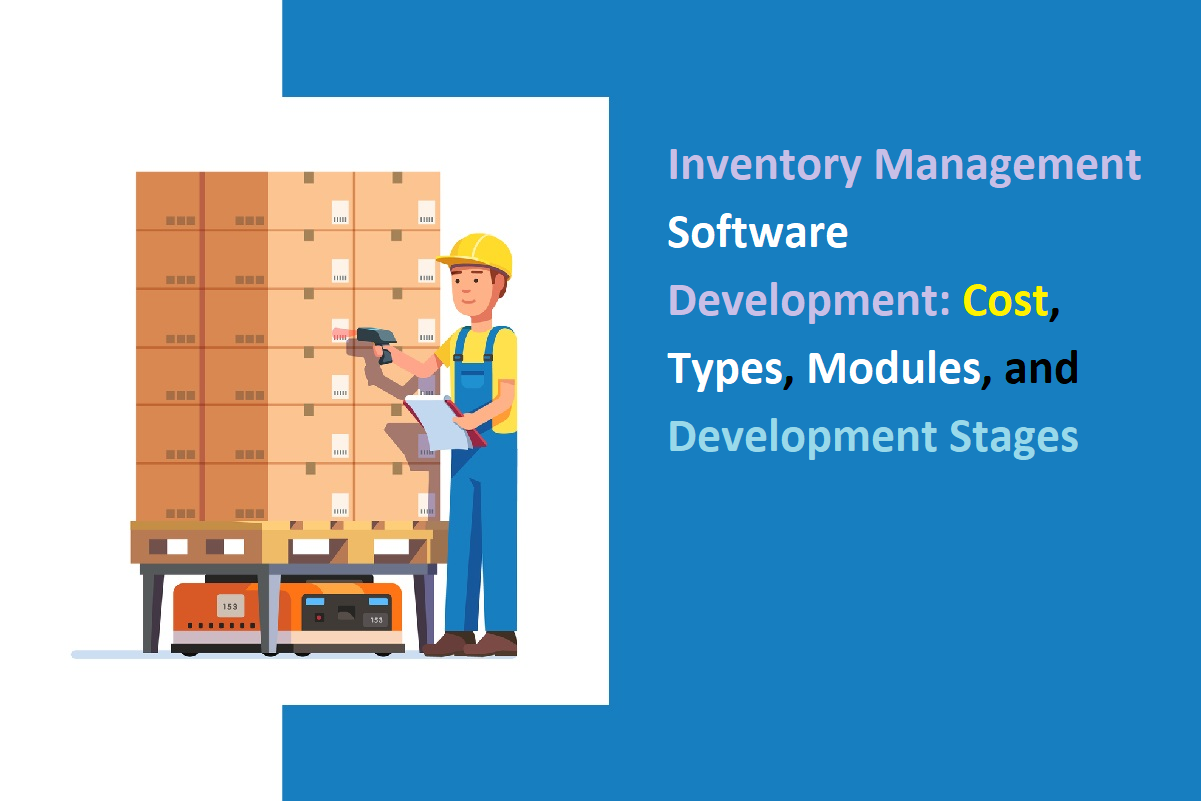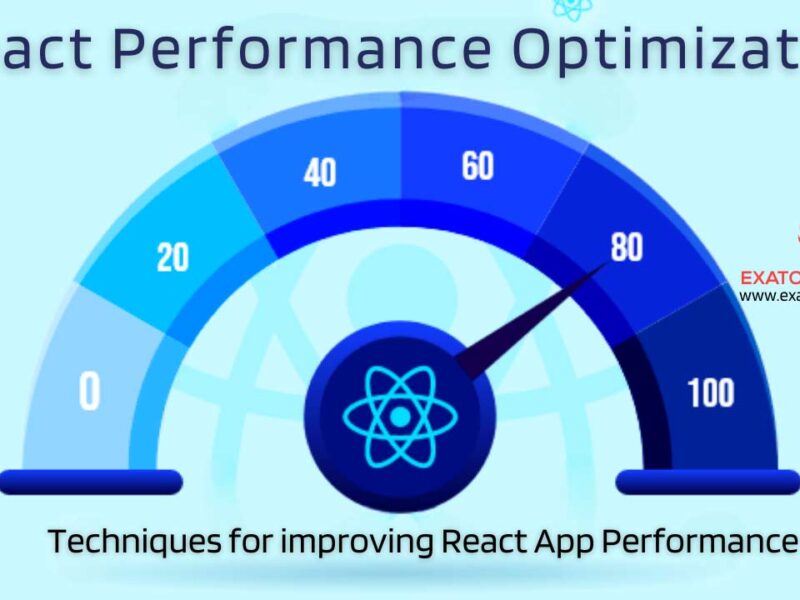Before we are into the Inventory Management Software Development cost and features, let’s first discuss why it’s necessary. Large industries that offer completed products and materials to numerous vendors keep a separate inventory of the finished raw products which they own and produce.
Industries with large-scale operations require the construction of a specific database management system. As a result, these software assist these companies in gaining a clear image of the item that is in high competition, the industry professional that they have, and other statistics linked to business operations.
This specialized system is known as the Inventory Management System. Simply put It can be defined as the system that manages the flow of the company’s product (i.e., in and out). This system monitors all functional operations beginning with production, and details about each and every movement are kept with in Inventory Management Software.
What exactly is inventory management?
Chain management is the process of maintaining track of the products that are stored and categorized by order, as well as managing them depending on usage and sales. Thus, it might include the management of all raw materials, and necessities required to manufacture a final product, including completed products in various warehouses and processes.
Inventory Management Software Kinds:
The following Inventory Management Software types are available:
Software that are manually managed:
The name implies that all these software are manually managed. Complex calculations are performed via formulas submitted by users. This form of an inventory management system is most suited for start-ups or small-scale firms, as well as enterprises that still handle goods on paper. These software make it simple to keep track of and order a limited number of commodities. As a result of the human computations, there is a high risk of management errors and inaccuracies with this sort of system.
Scanner for Barcodes:
Using these software, businesses can simply plan and monitor hundreds of things, as well as easily obtain data from the point-of-sale system in terms of performance, barcode scanning devices are both resilient and efficient. As soon even as stock arrives at the warehouses, the data is automatically updated, and the management has access to the most current information. As a result, barcode technology simplifies the tracking of price movement of stock from one warehouse to another though from a facility to a consumer.
System of Radio Frequency:
That’s one of the cutting-edge technologies that has completely transformed commercial operations. RFID stands for enhanced radio frequency identification, and this technology is specifically built for organizations that have thousands of products flowing in and out on a daily basis.
How Inventory Management Software Works:
A barcode scanner reads the barcodes on the products. Computing device process the information that the barcode transmits.
For example, the purchasing department includes a number of things to package and despatch properly. In this case, inventory tracking development can assist in a variety of functions.
Using it –
- worker can readily locate the products on the order list with in warehouse,
- shipping information such as delivery addresses and tracking numbers can be encrypted,
- maintain the inventory tally up to date to obtain real-time tracking data,
- locating and evaluating inventory information is straightforward with an inventory system and a simple database search.
Businesses can benefit from this information.
The Advantages of Using an Inventory Management Software
Operational Consistency – With the assistance of an inventory system, it is possible to keep complete track of all products. You may simply verify the availability of goods without having to run to the warehouses, saving you a lot of effort.
Consolidated Storage – When you store your merchandise in multiple locations, it becomes difficult to monitor, organize, and convey all correct items to a correct client. Having a well-planned distribution centre can help you track the availability of various commodities and keep clients informed about the progress of their shipment.
Increases Productivity – By keeping complete track of everything, you can prevent losing clients and reduce the risk of committing fraud. Human detailing errors are common, such as incorrectly marking off items. Moreover, using inventory management software, businesses can easily meet delivery dates. Customers do not have to wait too long for their shipment.
Regular order monitoring – If a lack of inventory is bad for your organization, overloading is far worse. With a good inventory system, you can track your actual stock supply and re-request at any time. This would eliminate the wastage of things, which causes huge money loss.
Inventory Management Software Item Listing Features:
This component assists you in streamlining your inventory by providing important facts such as accessibility, cost, and so forth. It enables you to make decisions for each thing based on their features and handle them systematically.
Order and Accounts
Tracking Assets: This feature allows for the tracking of products housed in a store or warehouse utilizing a barcode, registration number, and unique identifier.
Simple re-ordering of products: The inventory management software offers a list of the products as well as the required quantities for products that must be stocked,. As a result of this, the supervisor can receive an alert regarding Tracking Raw Materials: This feature makes it simple to determine the availability of materials for commencing fresh manufacturing.
Accounts Management: Users can obtain an accurate assessment of stocks in production by applying techniques such as cost layering, measurement, overhead allocation, and disclosures.
Stock Management
Auto Filling up of Stock: With the aid of this functionality, refilling of supplies may be based on the defined noteworthy amount when stocks are close to approaching their minimal level.
Barcode Scanning: This function allows for the scanning of product barcodes. This electronic data sharing is achievable using barcode scanners or cell phones barcode scanning software for mobile devices
Support for many locations: In some cases, a corporation may have multiple sites. storage facilities Proper tracking and management of the total stock quantity available for a company may be done easily using an inventory management system.
Logistics Management: Integrates a third-party vendor to add transparency to the movement of products and materials.
Tracking and Alerts
Serial Numbers for Tracking: Regularly track and manage serial numbers. Ones, that log in on receipt and remain till issued.
Shelf & Bin: This function allows you to quickly determine the exact location of a specific product in the warehouse.
Inventory Alerts: When the stock level goes below a specified mark point defined or established by you. The system can create and distribute Inventory alerts by Email or Sms.
Stock Anticipation: By applying this function, the problem of excess or out-of-stock of stock may be avoided since it assists in determining the proper quantity of inventory that is required either by inventory.
ERP integration: To save time and prevent re-entering data into several programs, ERP integration using inventory management software might be a wise decision in managing various corporate processes.
Cost of producing Inventory Management Software:
The cost of Inventory Management Software Development is entirely dependent on the features and functions of the software. As a result, it is critical to have a fundamental understanding of the business requirements.
If you have a basic understanding of the company requirements, you can quickly determine whether you can profit from a simple introductory system or whether you need a fully functional inventory system coupled with ERP software. This understanding will also help you create a reasonable budget.
If you are ready to design an inventory management system from the start, the cost could range between $15,000 and $30,000. This cost is entirely dependent on various features, technology, and other factors. Features that would be incorporated into the software
The cost of producing Inventory Management Software varies according on geographical location. The development cost in America goes from $200 to $45 per hour. Whereas the development cost in India is from $25 to $45 per hour. Furthermore, the cost of development may vary based on the developer’s experience.
As a result, if you are looking for a technology provider to help you develop software such as Inventory Management, you may easily employ our professional developers to help you develop software such as Inventory Management.
Advancement of Inventory Management Software:
Obtaining effective and strong Inventory management Software is critical for all retail and manufacturing firms, and hence its design is critical.
Creating dependable and powerful software capable of controlling & managing inventory and ensuring there is no loss of commodities due to theft or spoiling is a difficult undertaking. As a result, the following factors are important when building software of this type.
Proper planning and conception are required.
Thoroughly analyzing the entire demand
Make a blueprint or a flow chart.
Formulation and execution
Ensure that all modules are thoroughly tested.
Integration of modules and software deployment
Requires regular maintenance.
When should you upgrade the inventory management software?
Moving to a specialized inventory solution can give significant benefits to your company, but it is a significant change. Here are several indicators that it’s time to upgrade.
You require more adaptability – Spreadsheets are a rigid method of inventory management. If you find yourself needing to add extra sheets to your solution or struggling because staff can’t access real-time data, it may be time to consider upgrading to cloud-based inventory management software.
More precision – Is it troublesome to keep track of what certain item you have at any one moment? Using a dedicated system, you — and your staff — will be able to obtain up-to-date inventory information at any time.
Inventory expenditures are increasing – If holding costs are not in check, seriously harms your bottom line. The key to lowering holding expenses is to just store what you need. An effective inventory management system aids in the efficiency of your storage.
Growth is slowing – Maybe your salesmen need to call to find out everything they have to offer. Or you spend far too much time mechanically creating reports instead of focusing on your clients. Slowing sale is generally a sign of poor inventory management; dedicated software can assist you in fast resuming growth.
Learn more about switching to the inventory management system. Or take the next step and discover why precise inventory control is critical to your business.
How do you create inventory management software?
Collect and evaluate the requirements. You must gather information and feedback from as many participants as feasible. Then categorize them according to their characteristics. If possible, try to forecast future integration with company software. If you don’t have the capabilities in-house and intend to outsource, inquire about the product discovery process with your vendor.
Make accurate time estimates – A simple system is taking 9 to 18 months to develop; however more complicated software takes a long time or includes more developers.
Hire or outsource a development team – Look for specialists whether you hire or outsource development.
The system should be tested – After you have made certain that each module has been tested and functions properly.
Maintenance schedule – Inventory management software, like any other system, requires ongoing upkeep from a development team.
How to select the top inventory management software development company?
Although there are many off-the-shelf software options for managing inventory, many E-commerce Solutions require the development of a bespoke system. So where do you start?
Investigate various outsourcing locations – When looking for an outsourced location, aim for one with a well-established reputation. Eastern Europe, Asia, & South America are the three most common outsourcing destinations. You can find here a side-by-side analysis of these three places.
Look for prospective partners – First, decide on a country. Then compile a comprehensive list of vendors for inventory tracking development. Begin by searching for organizations that provide certain services or visiting specialist directories under the relevant category. Check out reviews, client testimonies, and case studies. We created a 15-step method to locate the ideal vendor in one of our posts.
Evaluate Vendors’ technical expertise – Examine your IT stack and hunt for companies with related offerings. If you intend to implement advanced data analytics, seek a company that specializes in Big Data, BI, & data science. You need substantial cloud experience if you intend to migrate your solution to the cloud or require a hybrid cloud. You may also need to hire architects to audit its system or DevOps to assist you with infrastructure setup.
Select a vendor with a good portfolio – You can use a variety of criteria to identify vendors. But remember to search for a corporation with a track record of developing software. Their technical competence should match the technology stack you expect. You can also ask for a discovery process or talk about the working prototype.
End note
Before we go into the pricing and features of ASP.net development, let’s talk about why it’s required. Large enterprises with products for a wide range of vendors have a distinct inventory of finished raw materials. This system keeps track of all functional actions. Beginning with manufacturing, Inventory system saves details of each and every transaction. It is possible to maintain a complete record of all products using an inventory system. This implies you can avoid losing business and lower your chances of committing fraud.
With a proper distribution center, you can track the availability of commodities and keep shipment status updated for clients.
Inventory Management System’s Product Listing Benefits: This component streamlines your inventory management system. Your stock by providing critical information such as availability, cost, and so on. It allows you to make judgments for each item based on their characteristics and handle them in a systematic manner. Different approaches like cost stacking, measurement, excess allocation, and disclosures, users can acquire an accurate estimate of stocks in production. To control and trace a company’s total stock quantity you can use an inventory control system. This electronic information sharing is possible using barcode scanning or cell phone barcode scanning software. To increase transparency in the transfer of items and materials, a 3rd vendor could be incorporated with the system.



